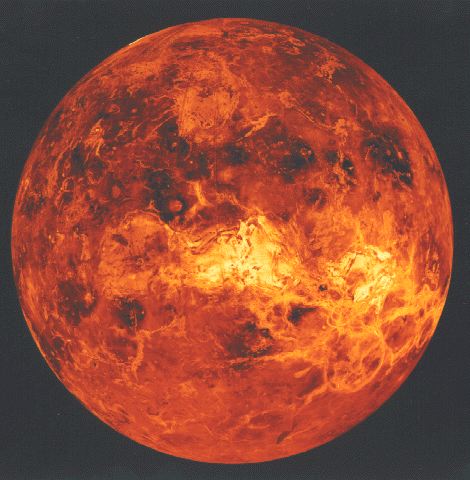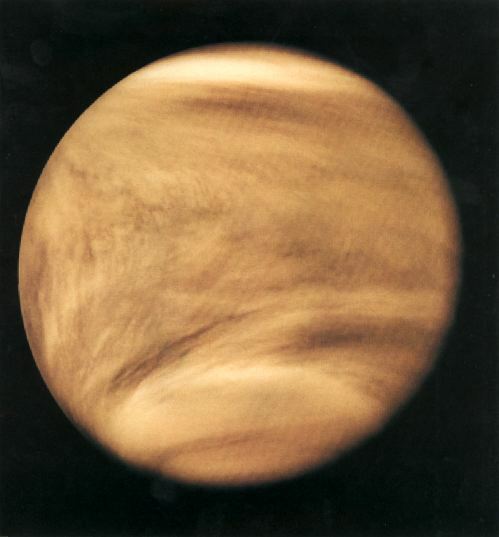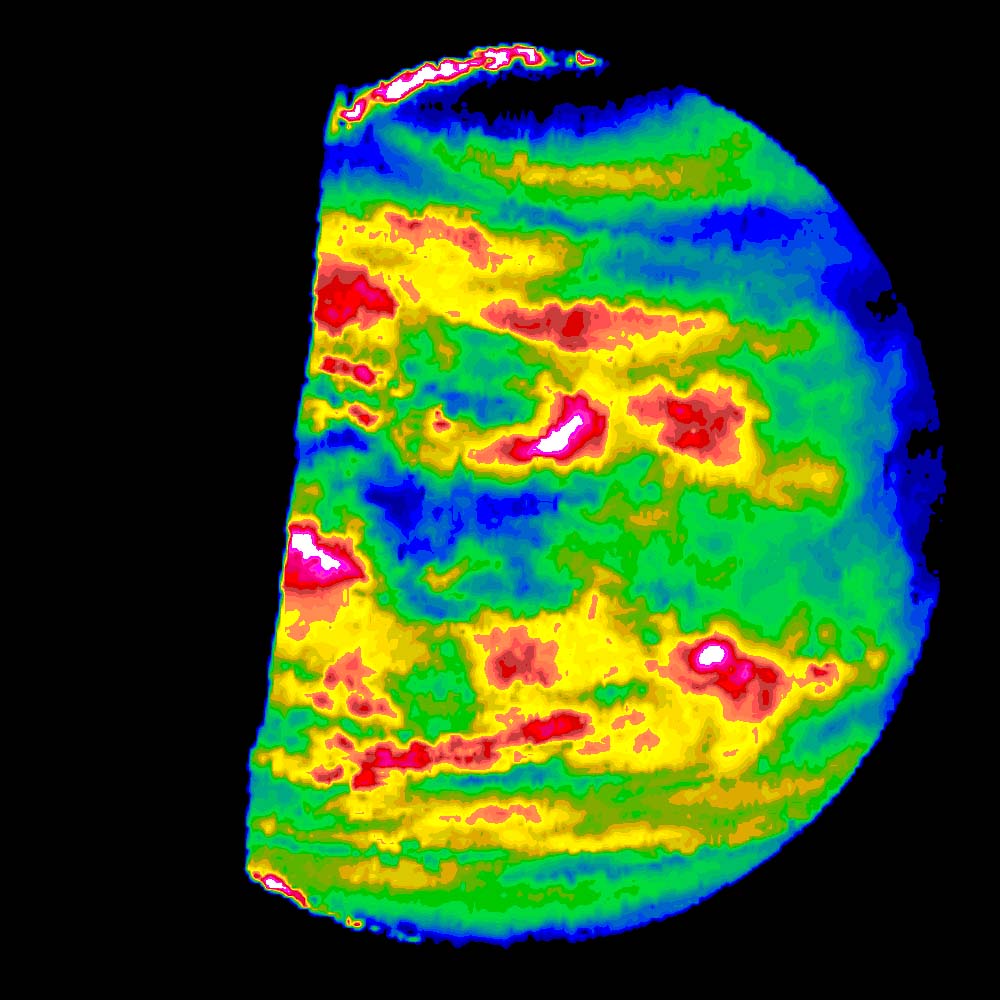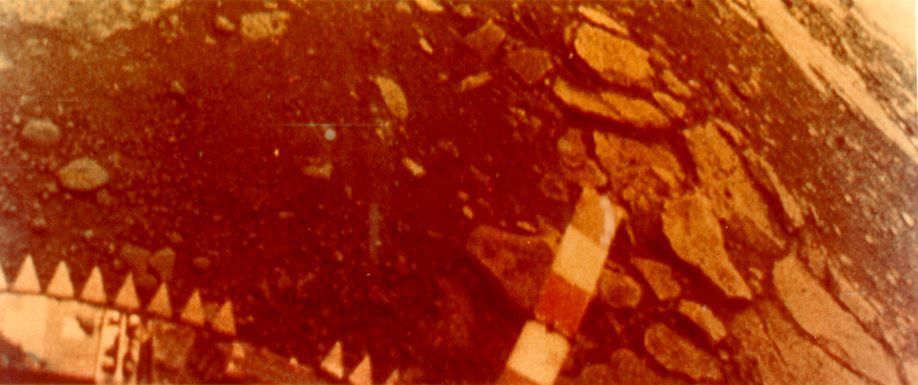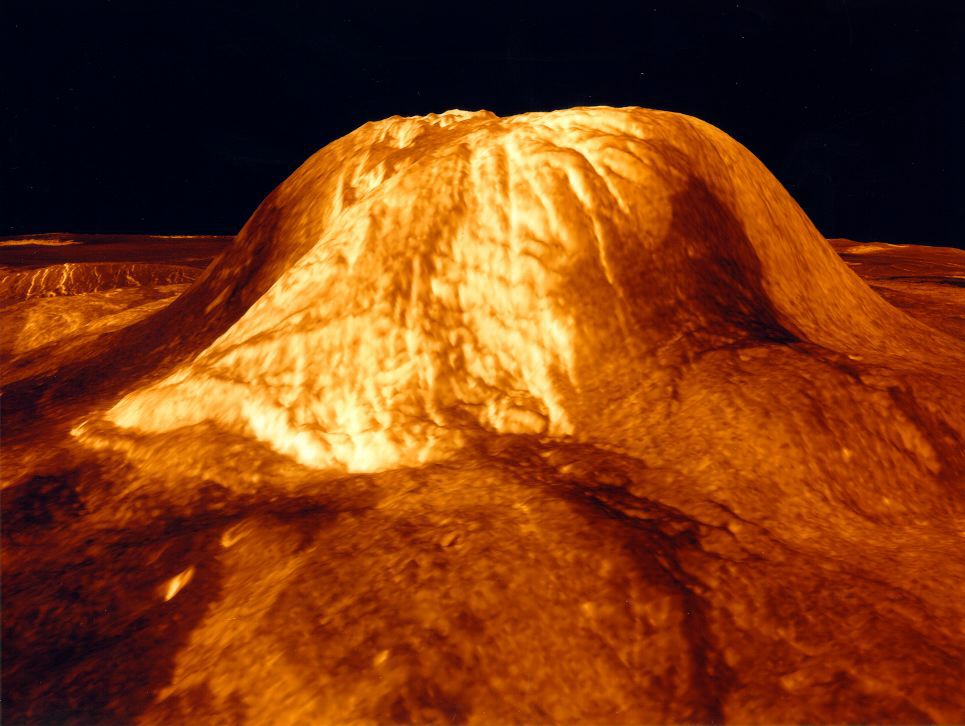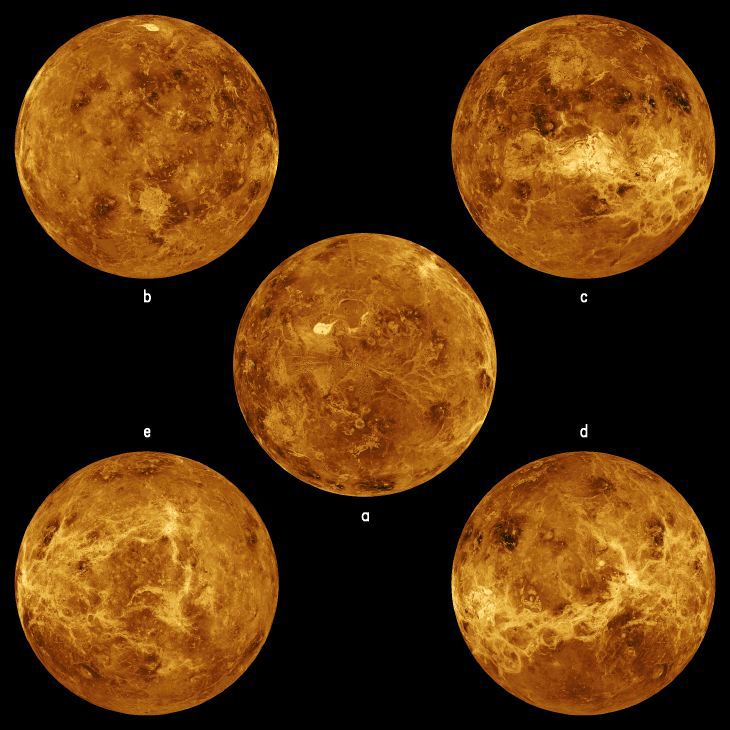Known as Earth's ugly sister, Venus is the second planet in the Solar System.
It is a similar size to Earth and, like Earth, is a rocky planet. But that is where the comparisons end. Venus is dark and hostile. It is littered in volcanoes and has the highest average temperature in the Solar System.
The reason for this is because the atmosphere is made up of about 96.5% Carbon Dioxide. This creates the ultimate greenhouse effect. Along with this, the surface of Venus has many active volcanoes all of which contribute to heating up the planet further.
Around the atmosphere are thick sulphuric acid clouds which add further to the greenhouse effect. These move around the planet in the same direction as it spins but around 60 times faster at 350km/h.
The best way that astronomers can gain an insight of the Venusian surface is through radar techniques. These have shown that Venus is a very smooth planet. About 90% rises no higher than 3km and about 85% of the planet is covered by flat volcanic plains.
Interestingly, as you can see from the Stat Box, one day on Venus, is longer than a year! Also, it rotates backwards. Why it does this is unclear, some think it was hit by a planetoid in the early days which actually turned the planet upside down.
The best time to see Venus is at twilight or dusk. This is because it orbits closer than the Earth to the Sun. During the Earth's day, it is directly in front of the Sun and therefore invisible due to the Sun's glare, this is called inferior conjunction.

